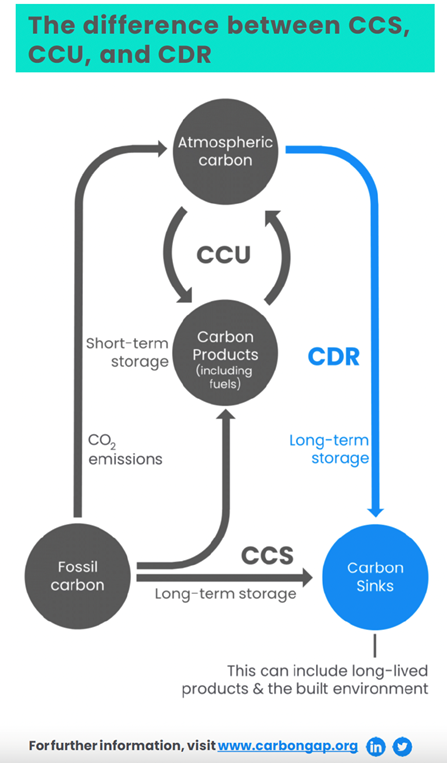Carbon capture and storage (CCS) and utilisation (CCU) present themselves as crucial solutions in the emission reduction strategies for hard-to-abate industries that have few other decarbonization options, such as chemical, cement, and steel production. It can also be used in the production of hydrogen.
CCS technologies prevent fossil-based CO₂ from entering the atmosphere by capturing it at the source and storing it safely underground so that it does not contribute to climate change. It involves three steps: during capture, the CO₂ is separated from other gases produced at large industrial facilities, such as steel mills, cement plants, petrochemical facilities, coal, and gas power plants; post-capture, the CO₂ is compressed for transportation, then dehydrated and sent towards the storage site generally through pipelines or ship; for safe and durable storage, the CO₂ is injected deep underground into rock formations (saline aquifers) and depleted oil and gas fields. In the case of CCU, the captured CO₂ is reused into useful products where it can be stored durably, such as cement, ceramics, or aggregates.
In its 2020 Energy Technology Perspectives report, the International Energy Agency (IEA) acknowledges CCUS as one the four pillars of the global energy transition, alongside electrification coupled with renewables uptake, bioenergy, and hydrogen, due to its role in reducing emissions from large power stations and industrial plants. Despite recognition of their unique role in decarbonization, the deployment of these technologies has been slow, with less than 0.5% of annual global investment in clean technologies being allocated to CCUS, and therefore with limited impact on global CO₂ emissions.
For CCS and CCU to reach their full decarbonization potential, challenges related to policy and regulatory support, social acceptance, and costs of the technologies will need to be overcome. With cities typically being large industrial centers, as well as centers for innovation, they are great candidates for integrating CCS and CCU in their decarbonization strategies.

Comments ()